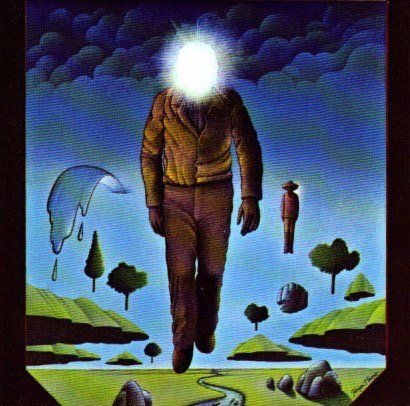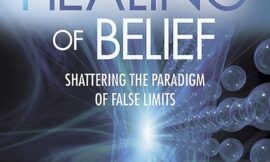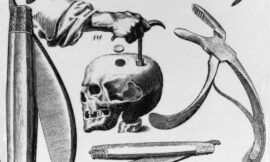
While Carlos Castaneda’s Teachings of Don Juan Series was released as non-fiction anthropological works by the author in his apprenticeship to Don Juan (initially considered an Indian witch doctor until he revealed himself as a sorcerer versed in ancient Incan techniques), many consider the books to be fiction because of Castaneda’s lack of proof afterwards of the events contained therein.
Whether the teachings discussed in the series are true or not, the general approach and the system’s metaphysical implications are more than compelling enough to be worth extrapolating, as metaphysical philosophy if nothing else.
Dreaming and the Energy Bodies
Dreaming, in Castaneda’s series, functions as a vehicle through which the individual can navigate the various dreamt layers of reality in a Hindu-like sense of Brahma, with the universe viewed as one shared dream. The warrior’s path, as Don Juan puts it, has more practical goals than a mystic’s enlightenment, nirvana or transcending far enough above the karma cycle to see the reality of Brahma, the unified dream that is the universe (though indeed, the latter is part of the process).
In Castaneda’s work, the universe is not only one to be observed and live within but to navigate and overcome by careful control of one’s perception and will. As Don Juan points out to Castaneda, while one cannot deny the physical aspects of reality, one must also remember that the universe if first and formost built upon energy.
In this piece, since dreaming is viewed not as merely a process of the brain, but an actual movement of the individual’s perception through this world and others (even if they’re just worlds concocted by the will of the dreamer), the dreaming body is treated as a fully legitimate source of power and energy for the individual.
One of the main goals of an individual on Don Juan’s warrior’s path to becoming a sorcerer is to not only realize the full potential of this dreaming body, but also to actually merge both the physical energy body as well as the dreaming body though a number of magical passes – named as such because of their amazing effects more so than to actually suggest that they are magical. Castaneda refers to the exercises as tensegrity, a term he borrows from architecture.
The Problem of Language
An understanding of the Sapir-Whorf hypothesis, where language is thought to influence if not determine perception, is helpful since Castaneda’s Don Juan takes it to an extreme – pragmatically using it to split open possible human knowledge into two cosmic categories: the tonal and the nagual. The tonal is everything that can be expressed semantically and the nagual accounts for everything else.
Language, for Don Juan, is what keeps one’s perception in line with society’s, effectively freezing one’s assemblage point in place (the assemblage point being a ball within the energetic field of the body through which the individual controls their perception of the world around them). Don Juan stresses three divisions of the universe as well: known, unknown (but knowable), and unknowable.
The goal then of the warrior/dreamer is not only to learn and explore the knowable, but to find ways to move in to unknowable realms as well through a two-part process of dreaming and stalking. In dreaming, the individual learns to move their perception (or more literally, their assemblage point) outside of their normal area of perception, and in stalking they learn how to hold that new area of perception (or location of the assemblage point) in place.
The trouble is, to do this, one must process what is going on around them without relying upon language, but still with some degree of sobriety and decision making. Things performed in the nagual cannot fall back on internal dialogue or language at all in understanding, since the nagual lies beyond possible description.
To overcome this, Don Juan spends a great deal of the series developing in Castaneda what he calls the second attention – a stronger understanding and awareness in which the individual actively knows things instead of passively in any kind of explanatory sense. Since this state of understanding is so foreign to that of the individual’s normal understanding, however, things learned or done within it are exceptionally difficult to remember while back operating with one’s day to day primary awareness. Similar to the goal of bringing together both the physical energy body and one’s dreaming, a major task of those following the prescribed warrior’s path is to remember all that takes place within their second attention and learn to move back and forth between both attentions with fluidity and ease. An eventual goal of those on the path is also complete memory, which Don Juan argues is well within human capability.
The Goal of Carlos Castaneda’s Teachings of Don Juan Series
The end project of the path, as outlined in Carlos Castaneda’s Teachings of Don Juan Series, is different from what it had been in the Inca traditions before it. Where once the goal was personal power, leading to frightening transformative powers within those individual practitioners, leading to sometimes amazing longevity of life, the newer school sought instead a much more existential quality: freedom.
Instead of seeking to manipulate their form for personal gain, there was instead a desire to ultimately lose it, with one’s consciousness breaking free of the slow breakdown of their body’s energetic field and moving out into an experience beyond death with its own possible actions and happenings.



